Ushguli
Outside Kutaisi we transferred from our bus to two four wheel
drive vehicles to climb over the pass to Ushguli. A few
years ago the government built a new electric line to bring power
from the other side of the mountains down to this valley. A new
access road was required for this work which provided a short cut
from Lentaki, just north of Kutaisi to Ushguli, probably
shortening the trip by five hours. We climbed steeply,
zigzagging up the mountain.
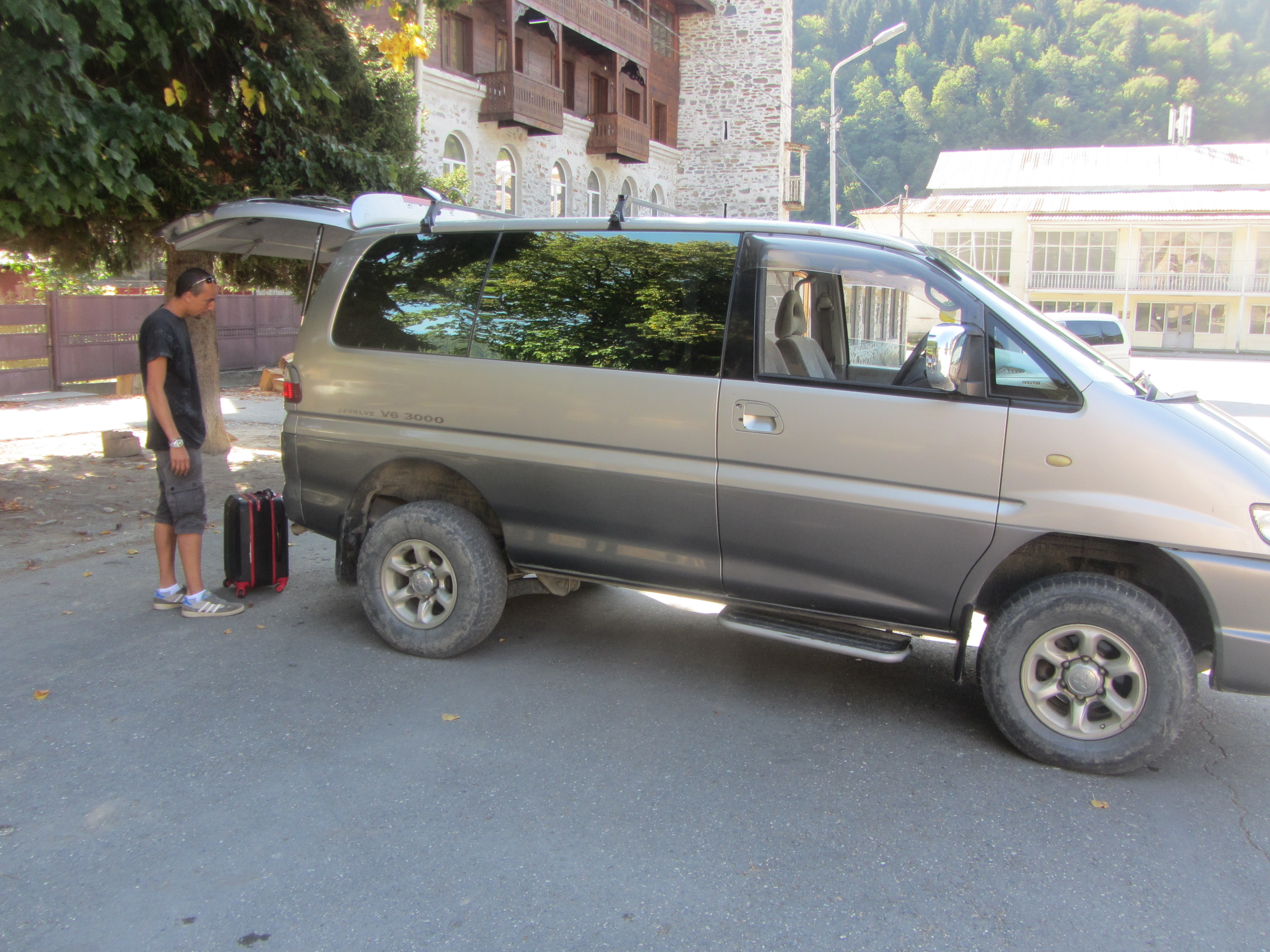
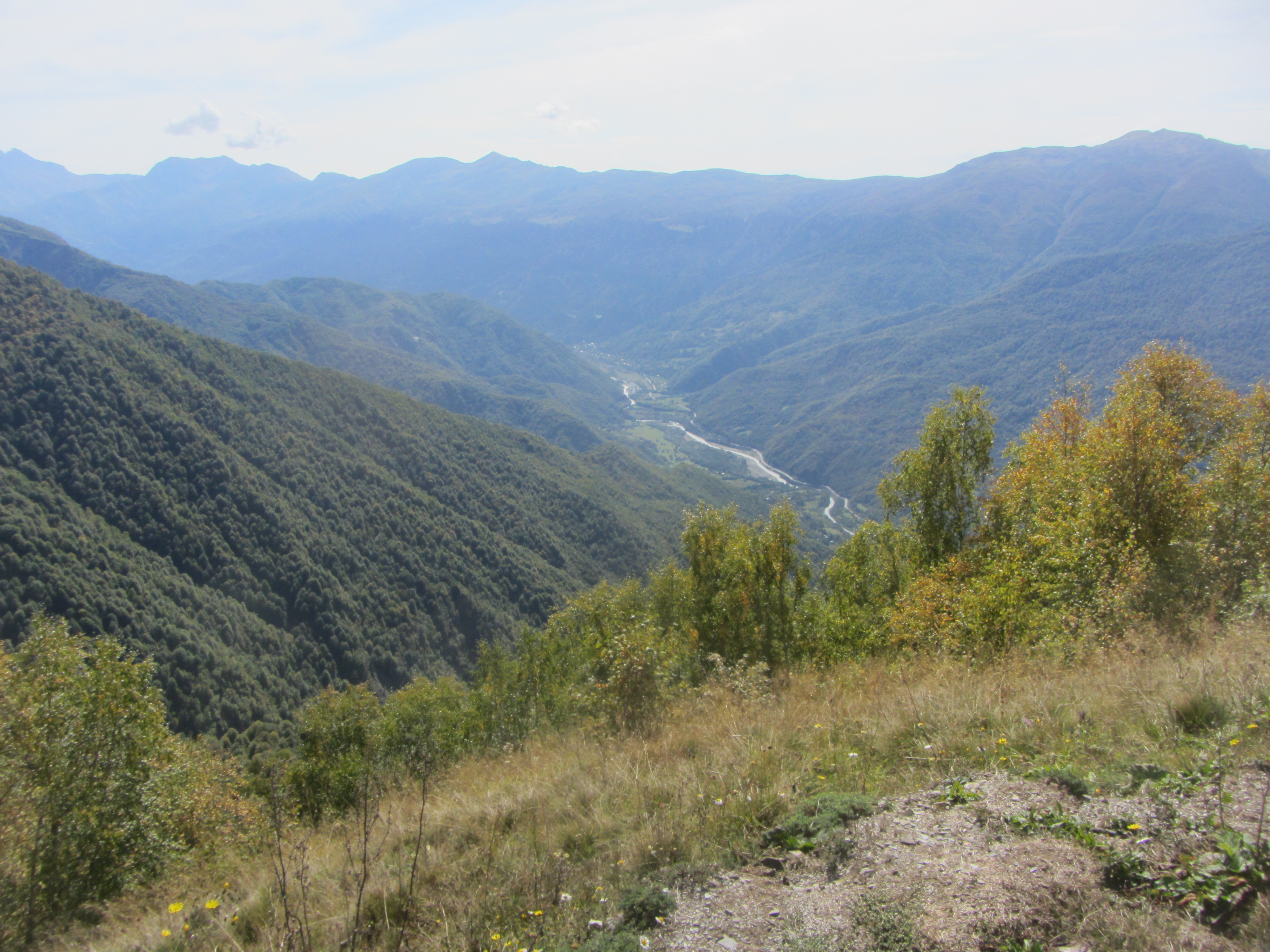
At the top of the pass we found a small chapel and stopped for a
picnic lunch. We huddled behind a wall to get out of the
wind.
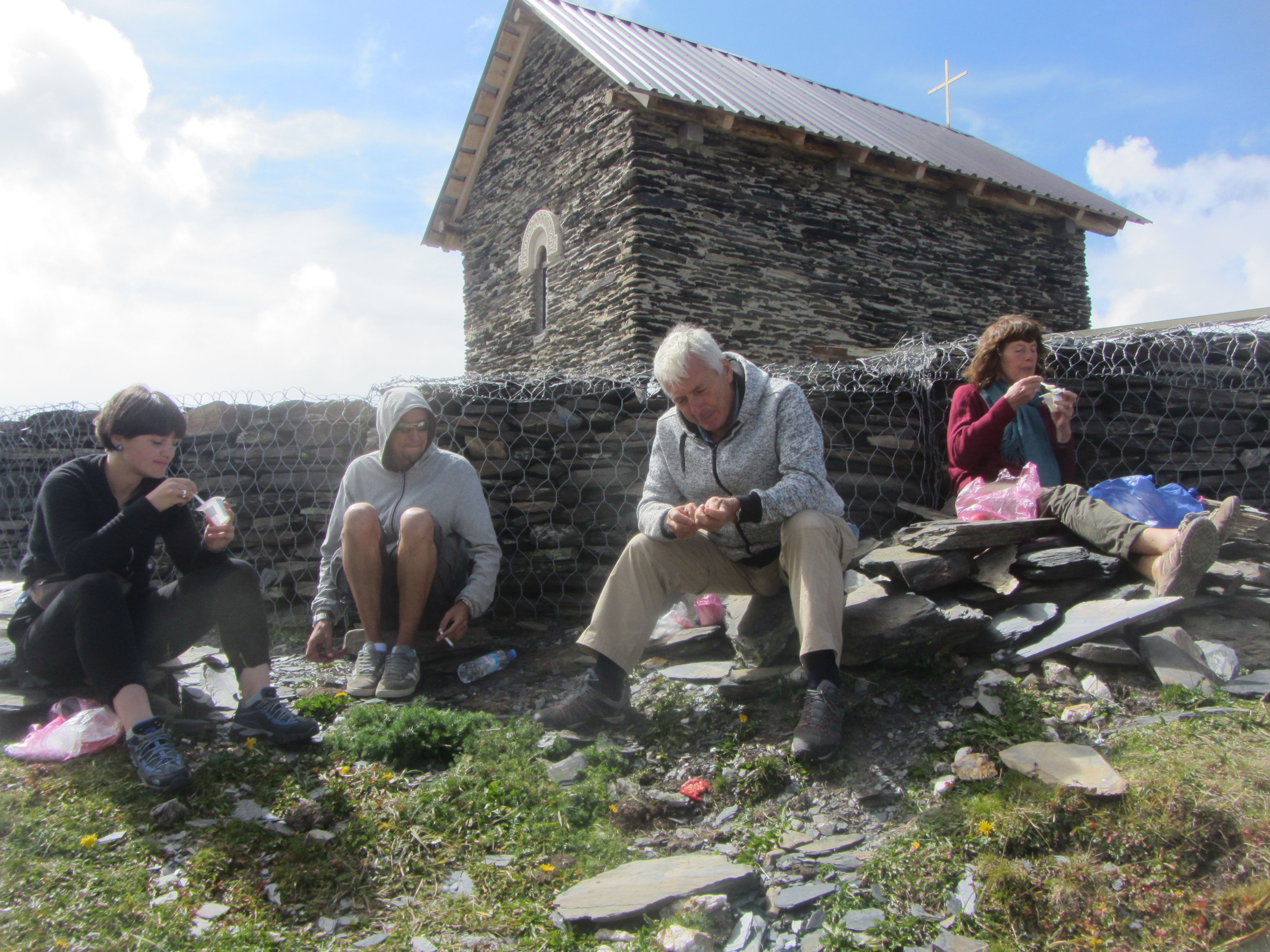
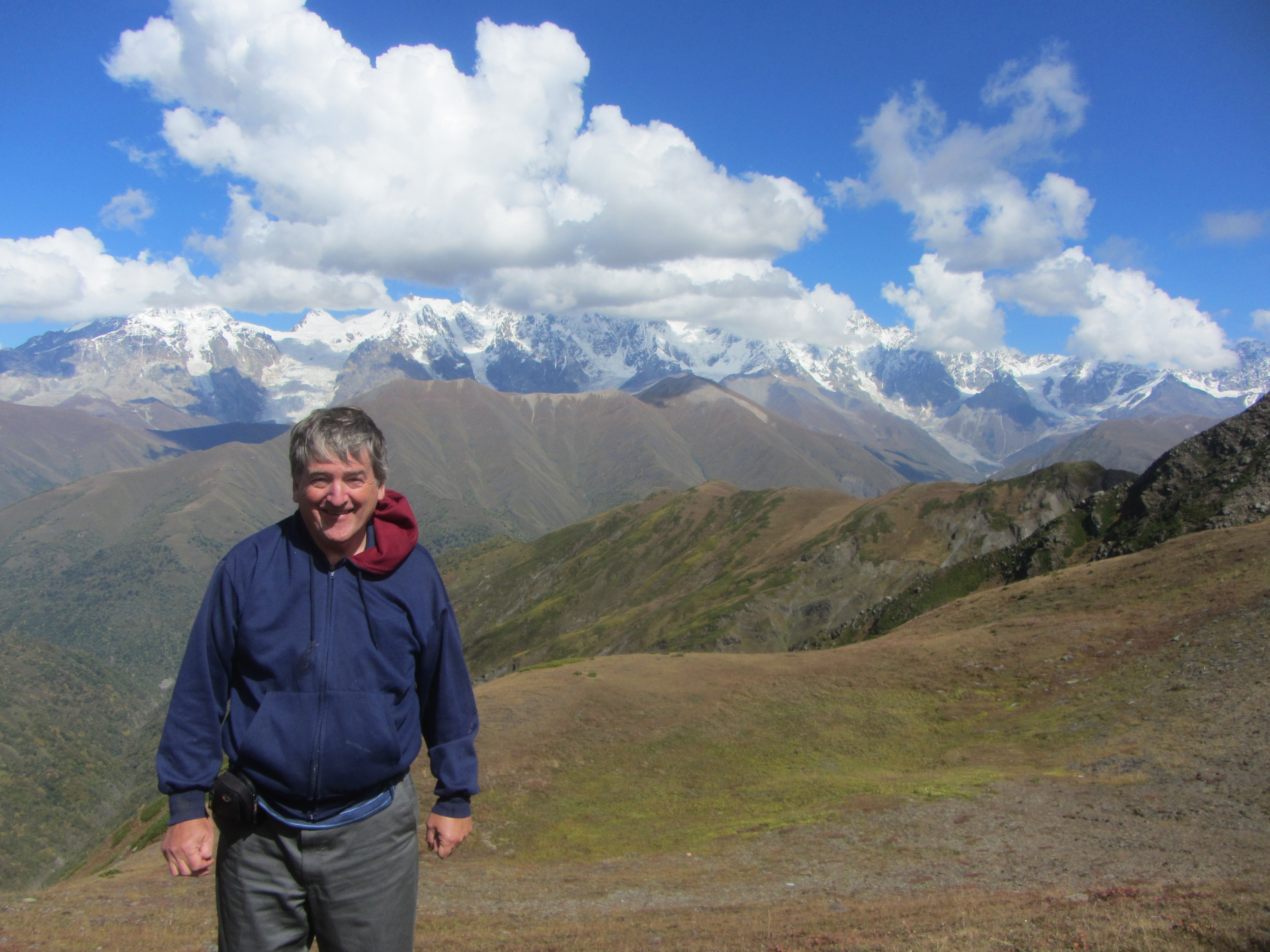
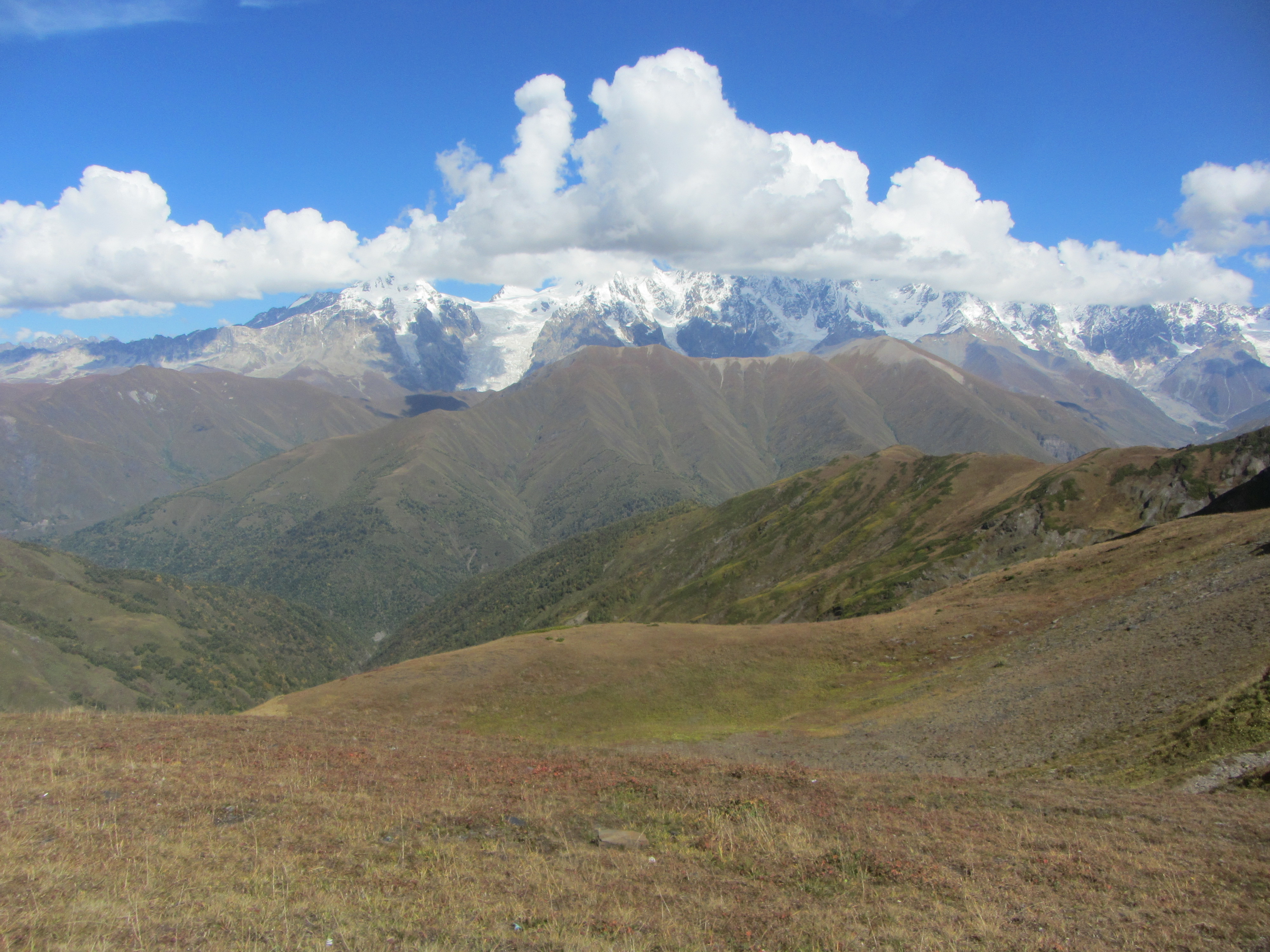
We started down the other side of the pass, glimpsing our
destination of Ushguli, at the bottom of the valley.
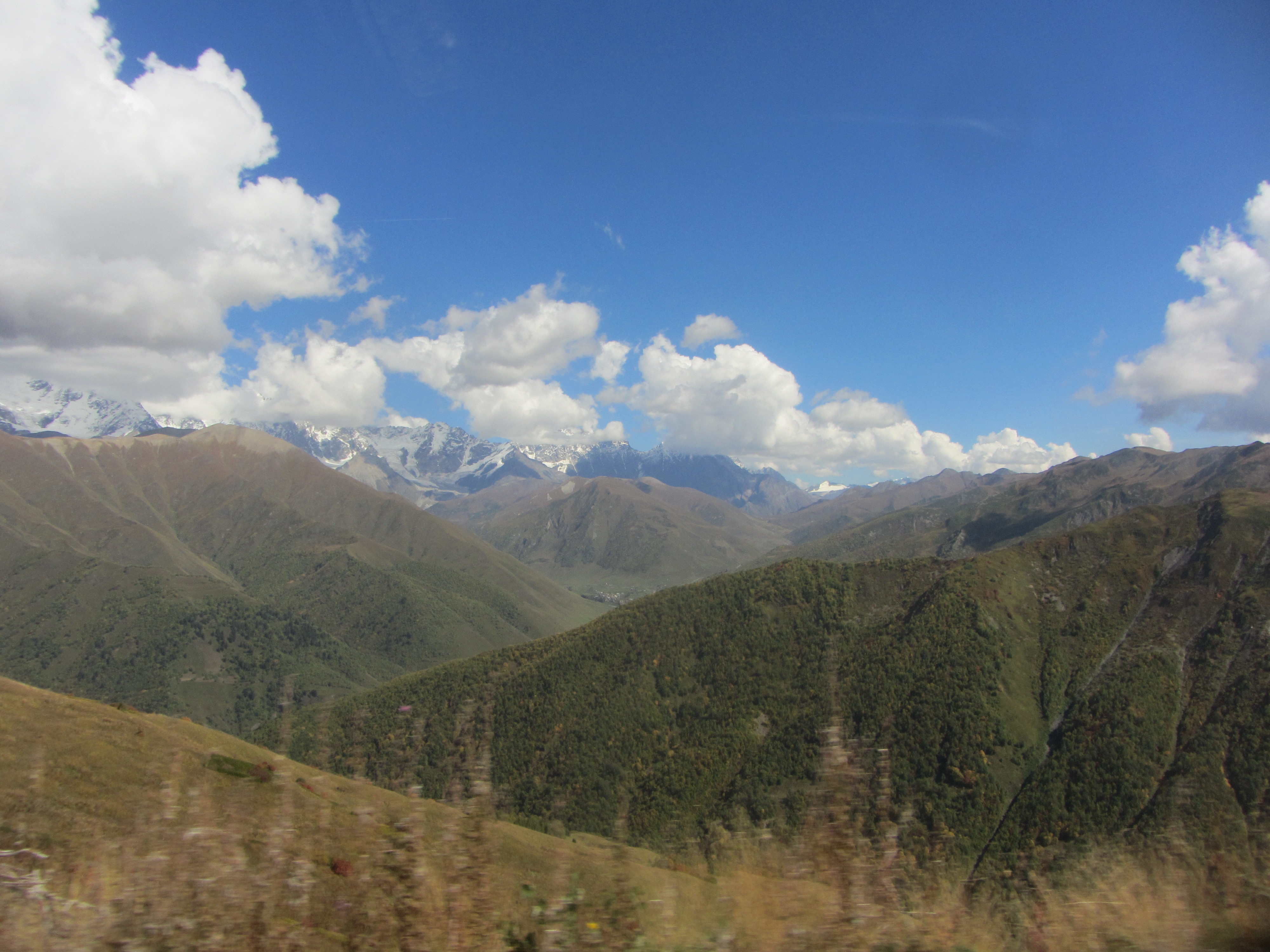
Ushguli is said to be the highest inhabited village in Europe.
Most of the houses here have attached towers built in the twelfth
century as defensive structures. Not only could inhabitants
shoot out the small windows, but they could also withstand lengthy
sieges, with the cows, sheep and horses on the bottom floor and the
people upstairs. Twenty years ago I had wonderful adventures
in Ushguli, guided by the eleven year old son of guest house hostess
(he was the only one who spoke English) and his cousins. I
took much better pictures of the village then. Today I was
overwhelmed with memories and forgot about my camera. Old pictures
are here
with descriptions here.and
here
.
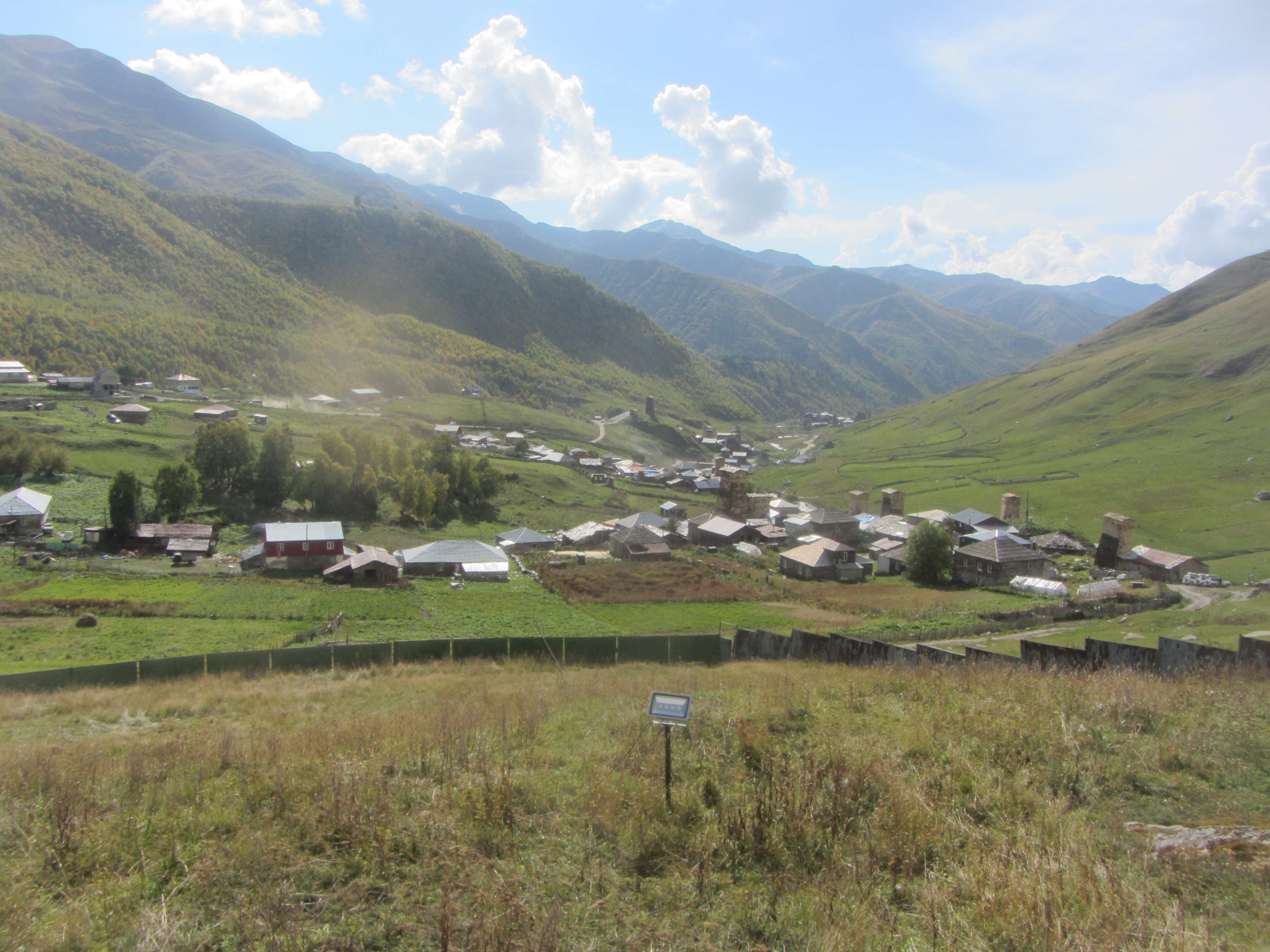
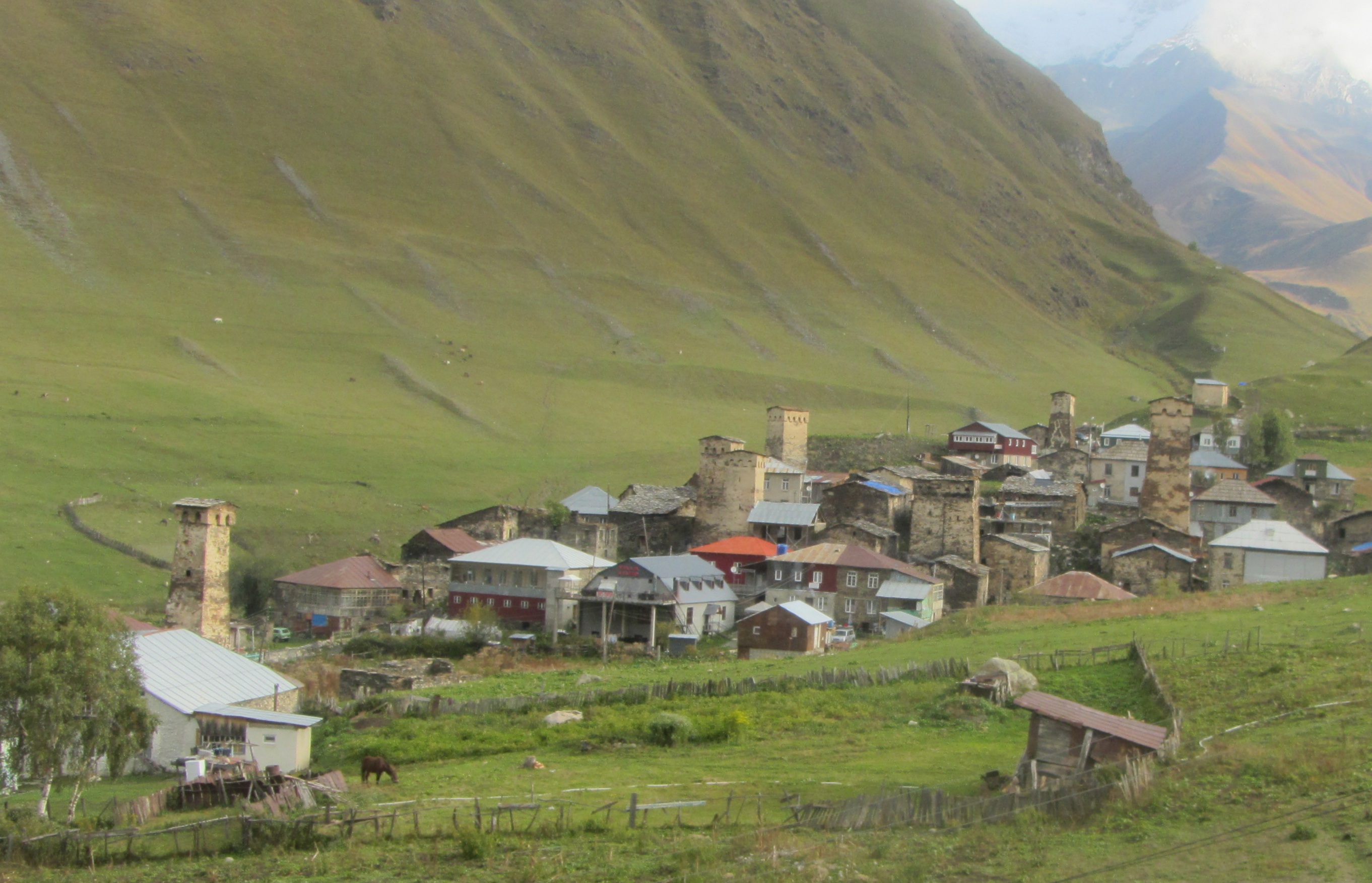
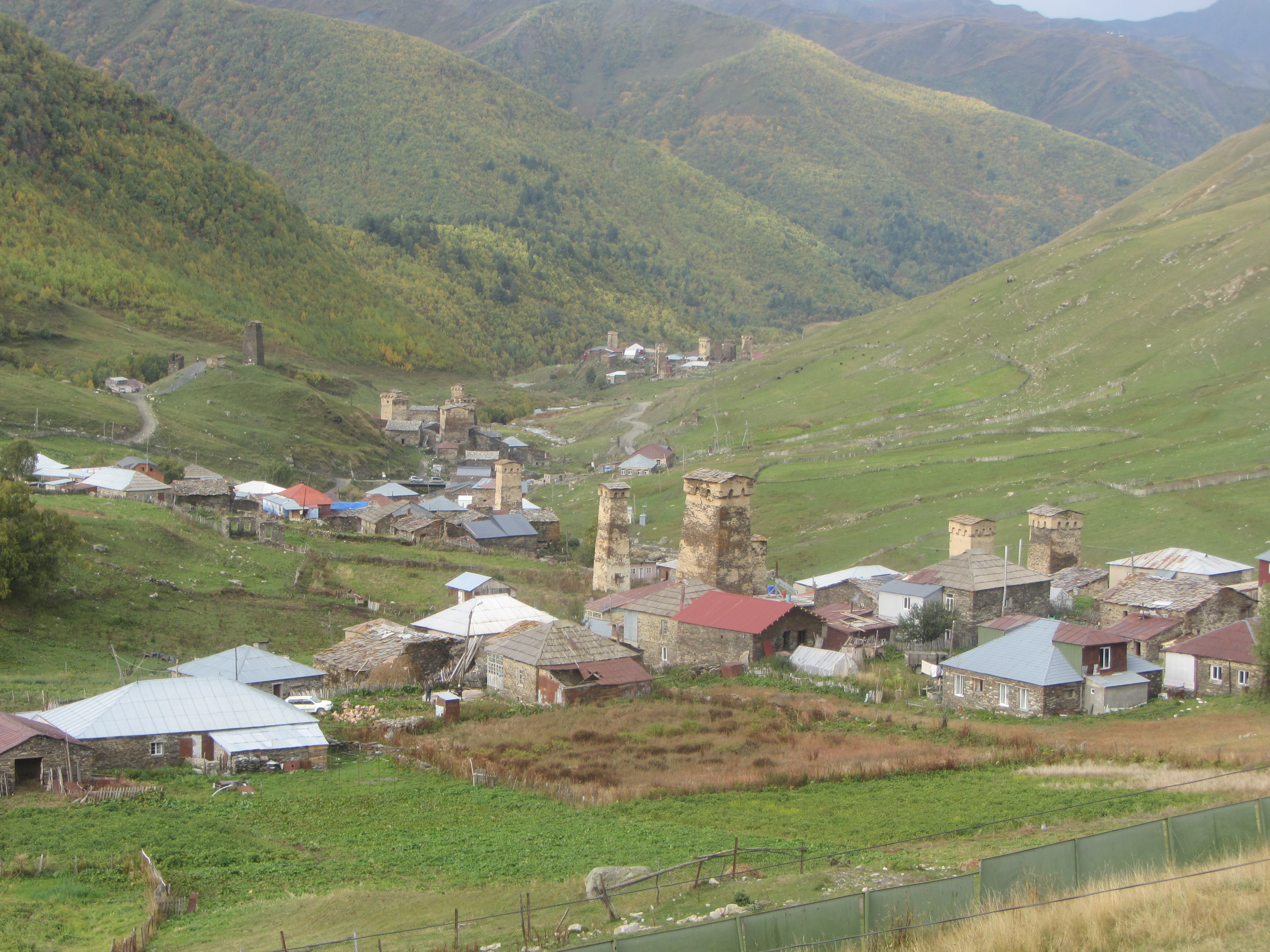
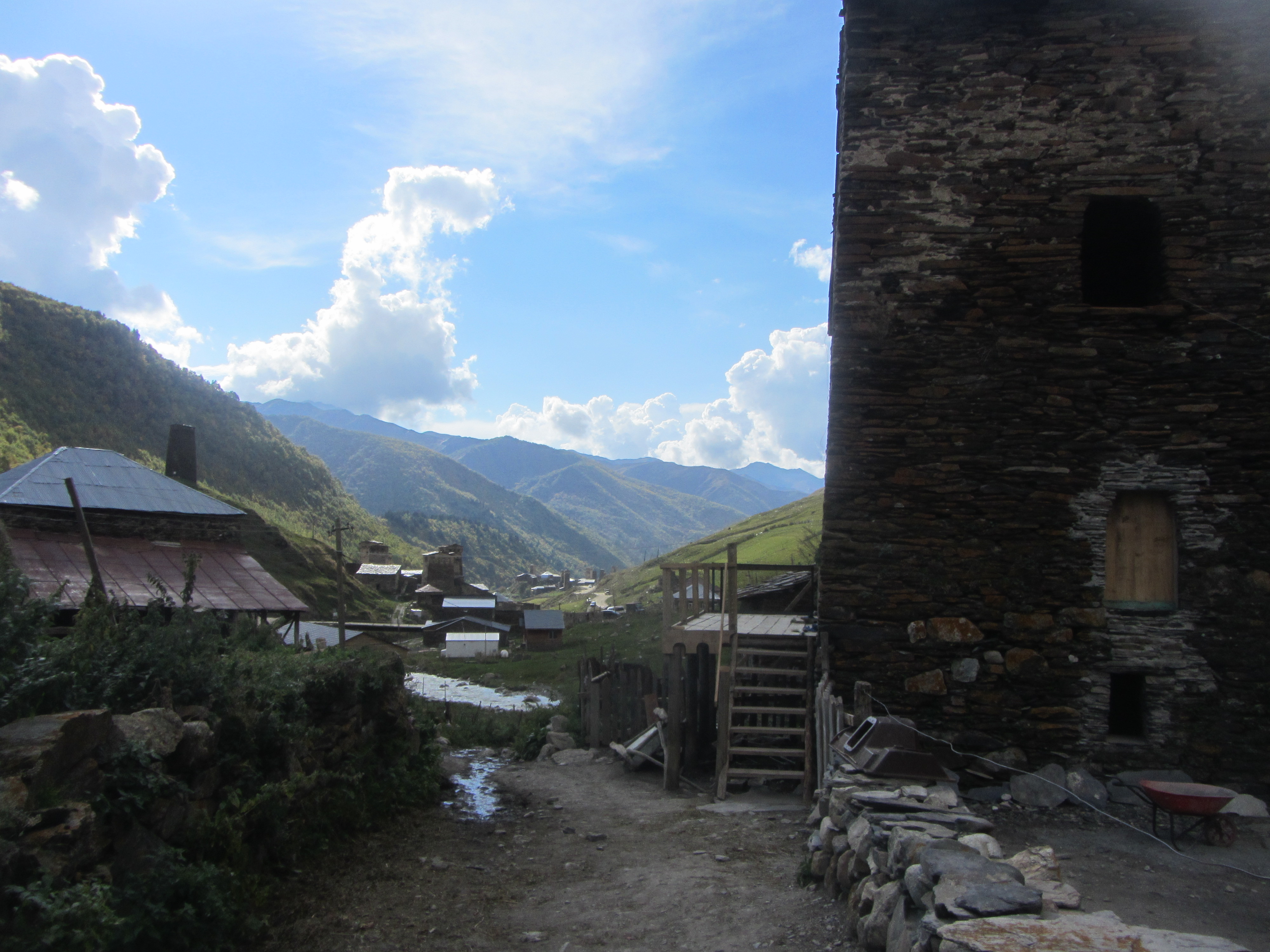
Most of the houses were little changed from twenty years ago and the
pathways through the village had not been improved, but scores of
guest houses and cafes had popped up. Twenty years ago I
seemed the only tourist but now there are hundreds. I was
pleased to learn that UNESCO is requiring those who made garish
changes to their houses to redo the work in an appropriate style.
The next morning we hiked toward the source of the Inguri River, the
biggest in Georgia and the source of much of the country's
electricity. But first we stopped at a church on a small hill
overlooking the village. Yesterday I saw a small wedding
taking place here (priest, bride, groom and four others) but today
we were able to get a tour. I was more impressed by the view
from the church than by the church itself. But we understood
that the church was important to the residents of Ushguli, that they
sought the advice of the priest on important matters.
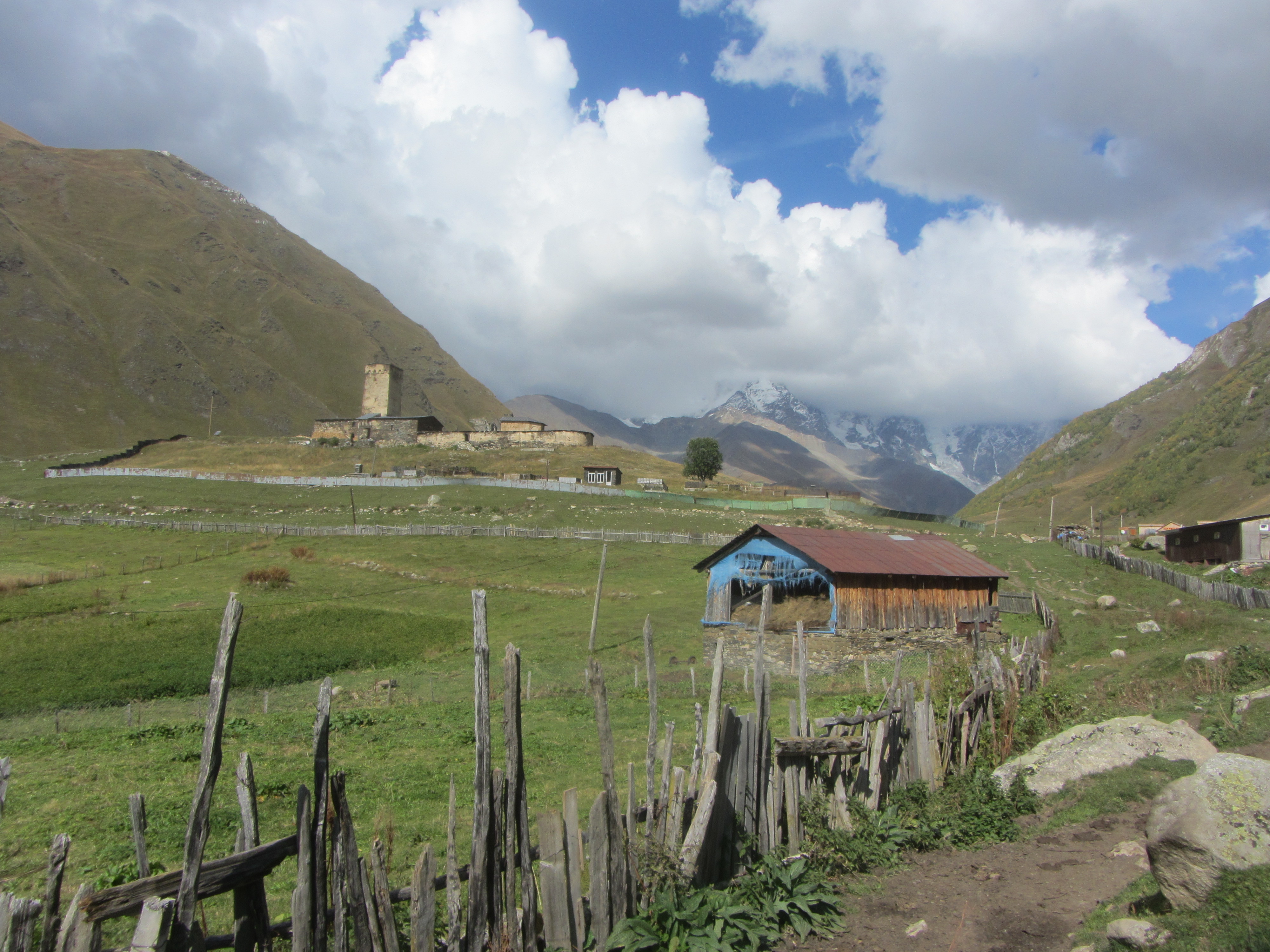
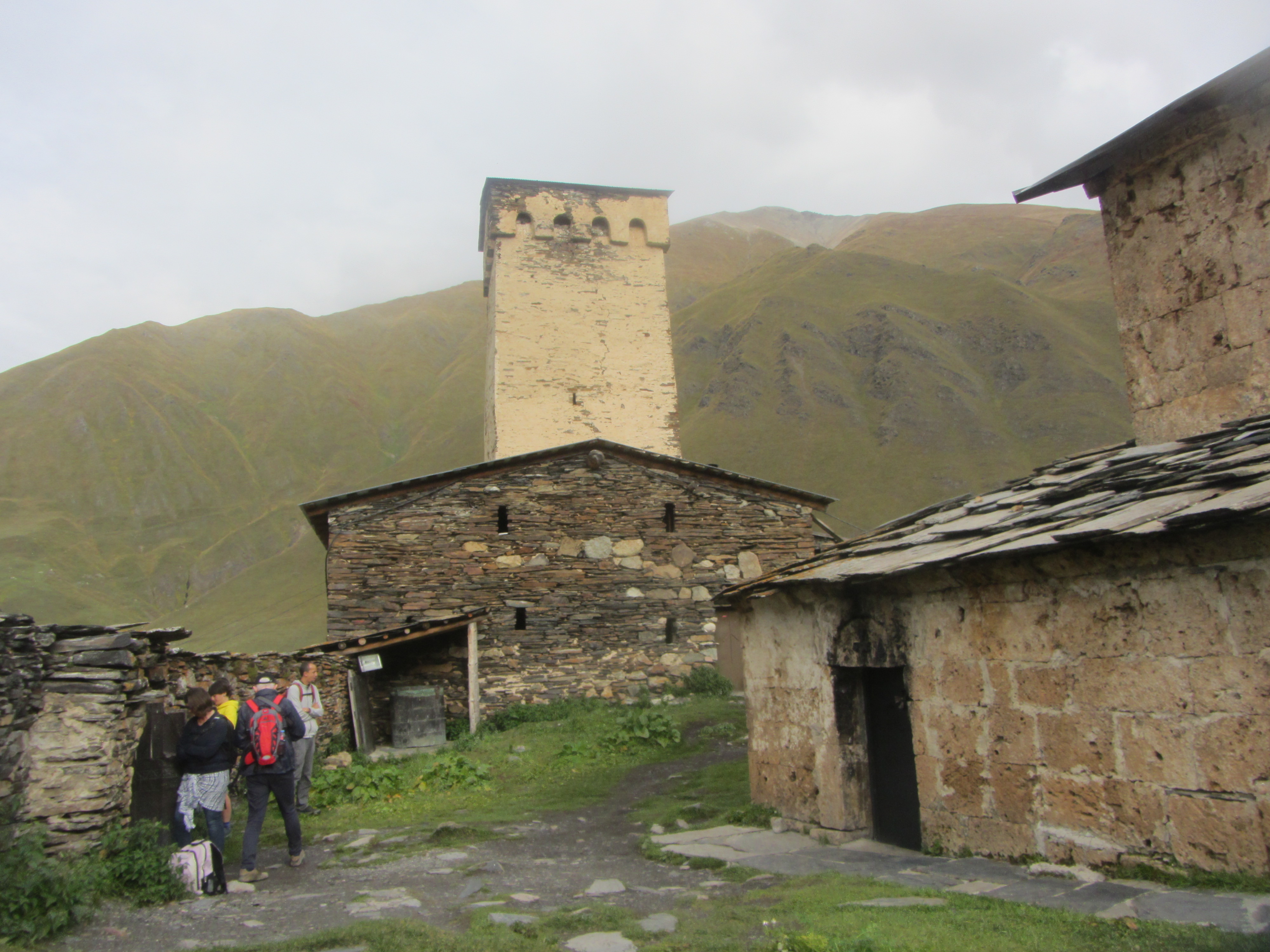
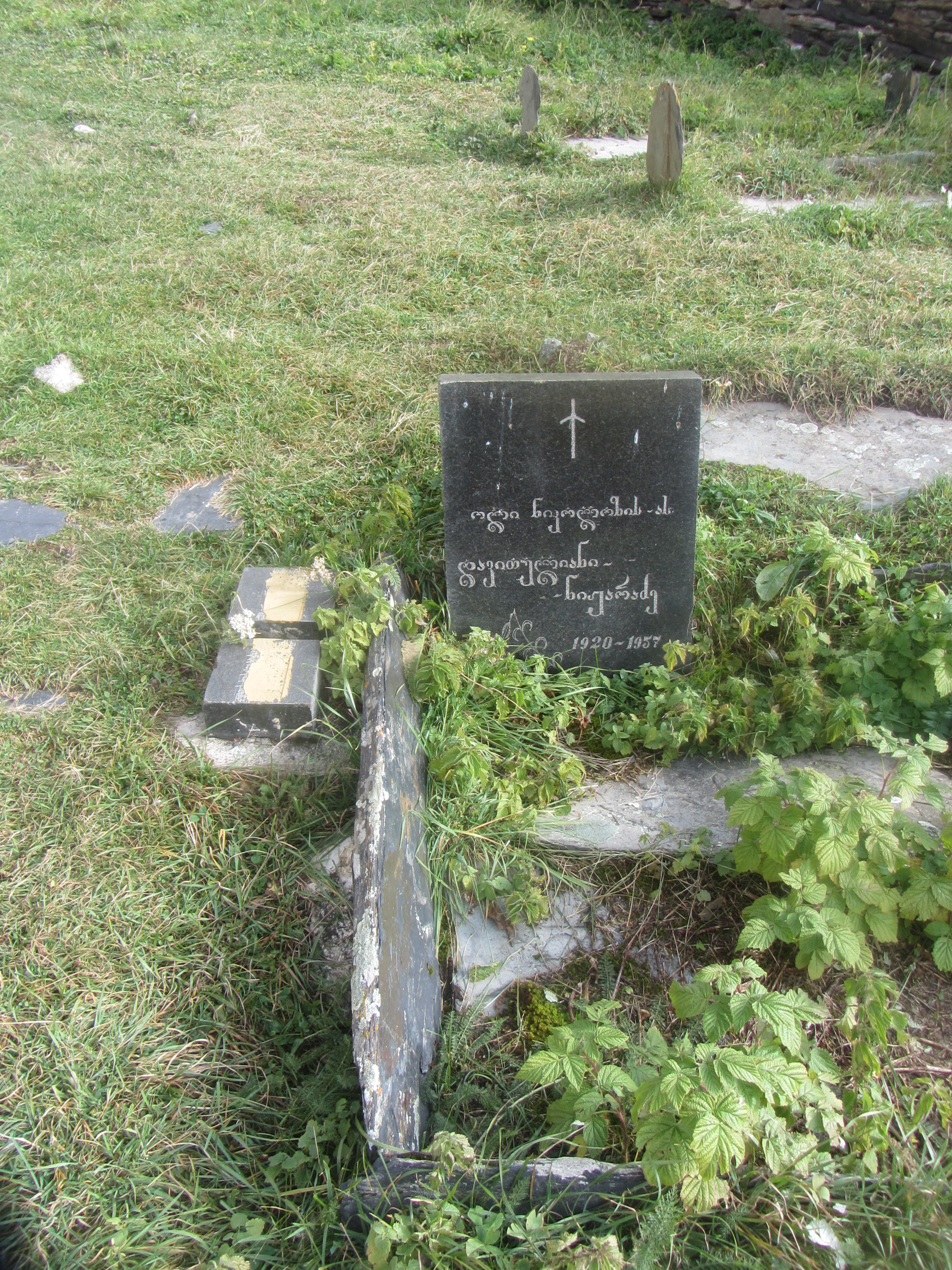
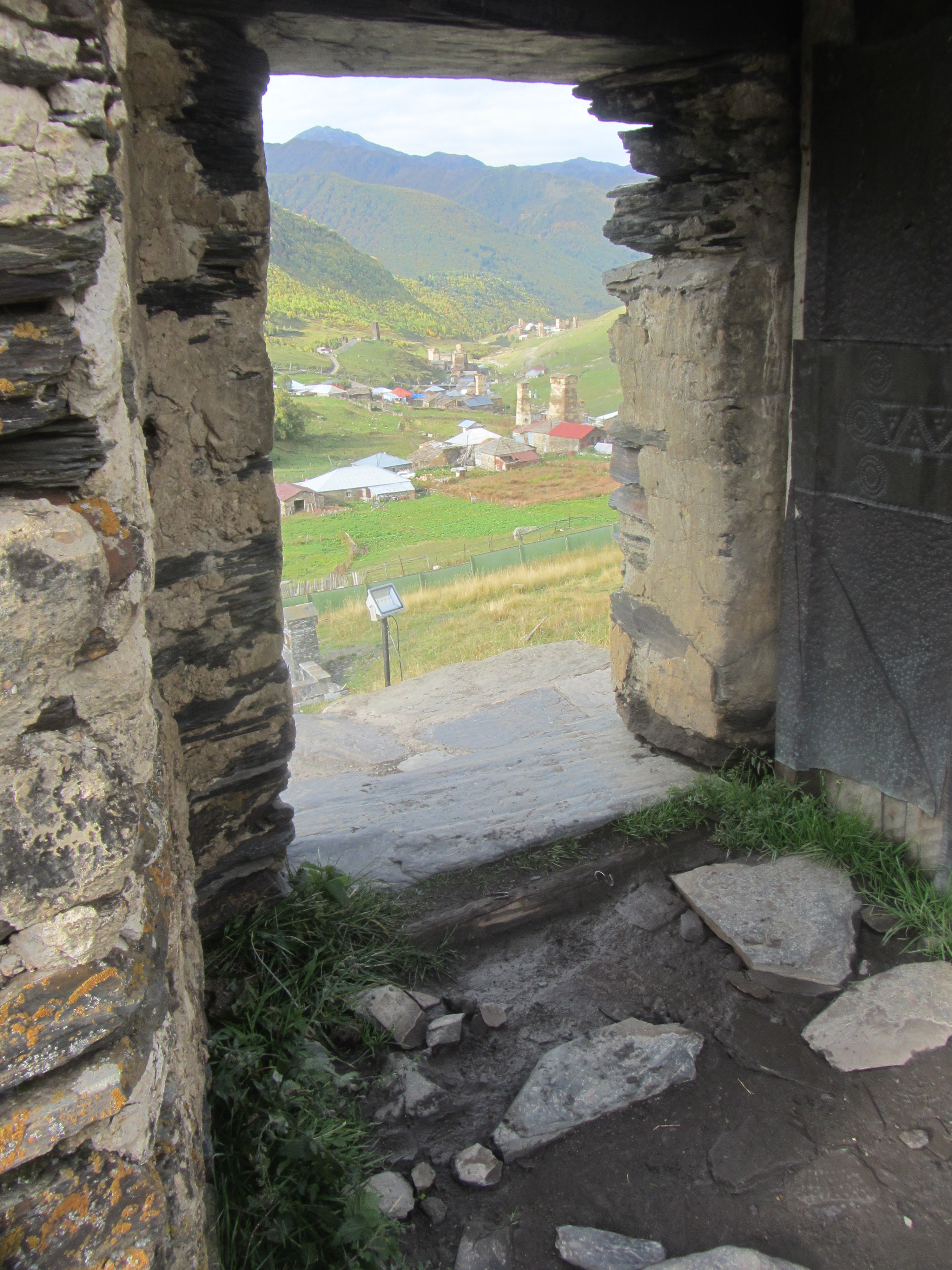
The weather felt ominous, with low clouds and a chance of real rain,
but we left the church and headed up the river.
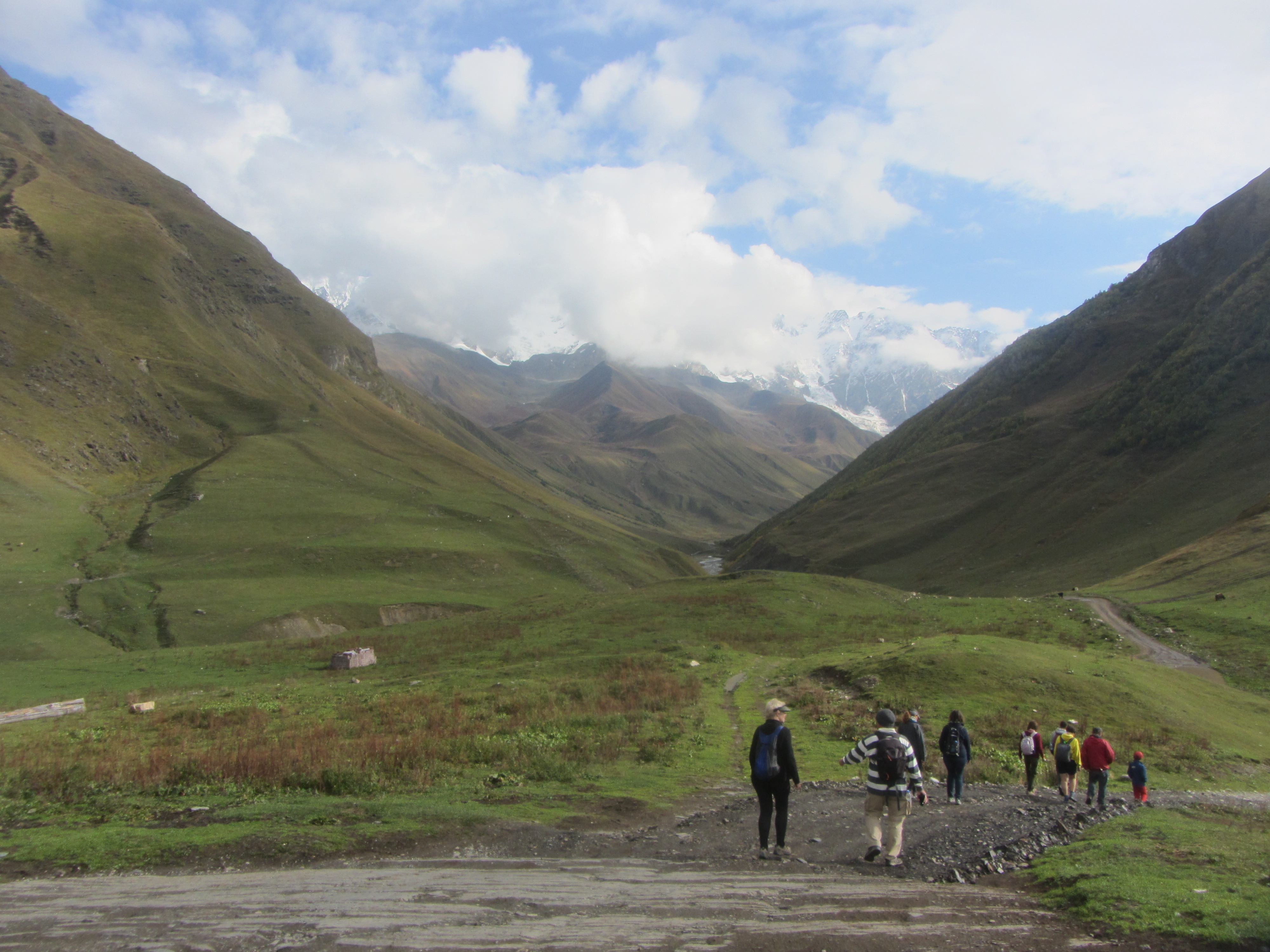
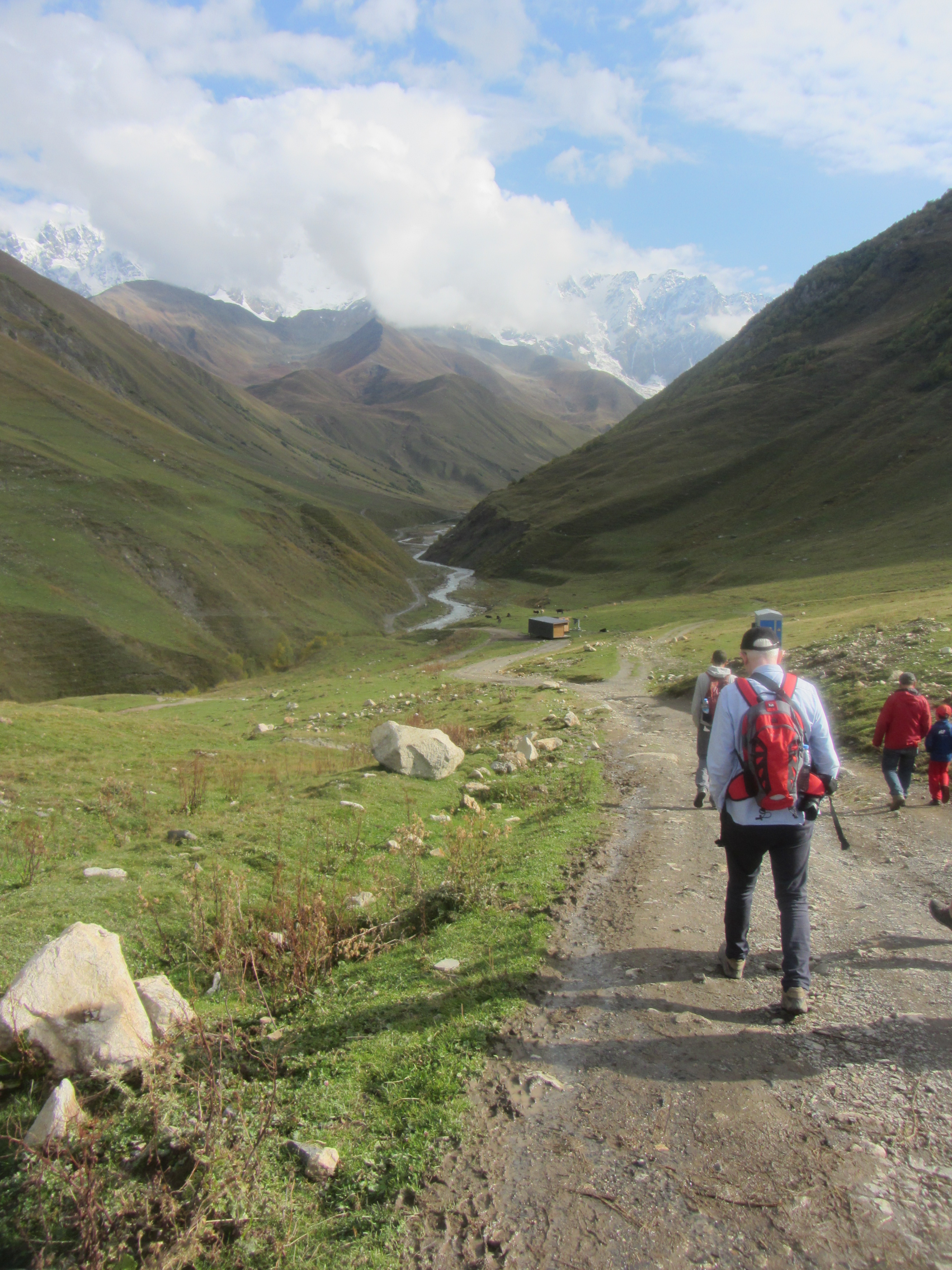
In a few minutes we found something that certainly was not here
twenty years ago: a ski lift. Not very big or
complicated but I am confident it was appreciated by people here
during the long winter.
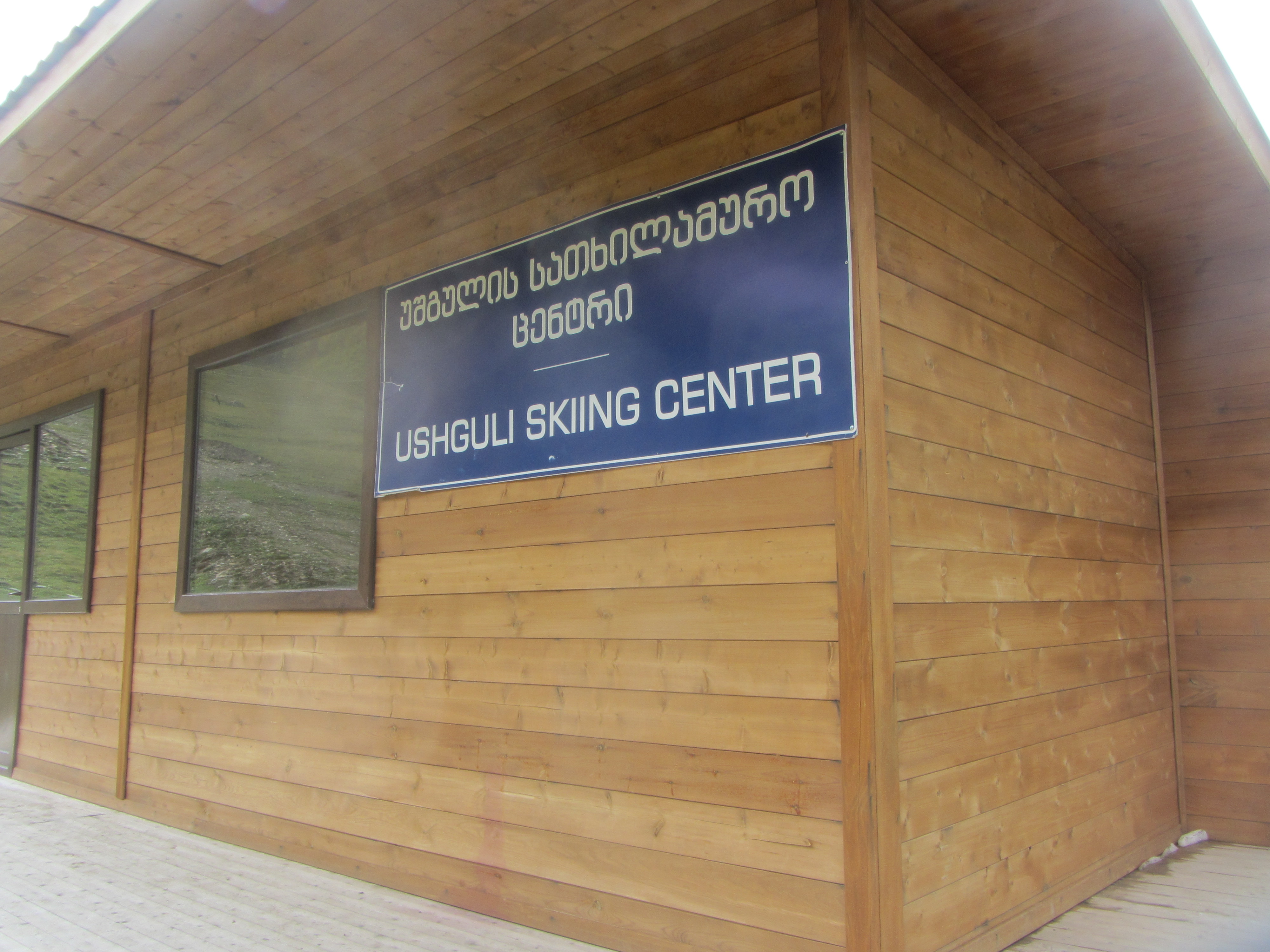
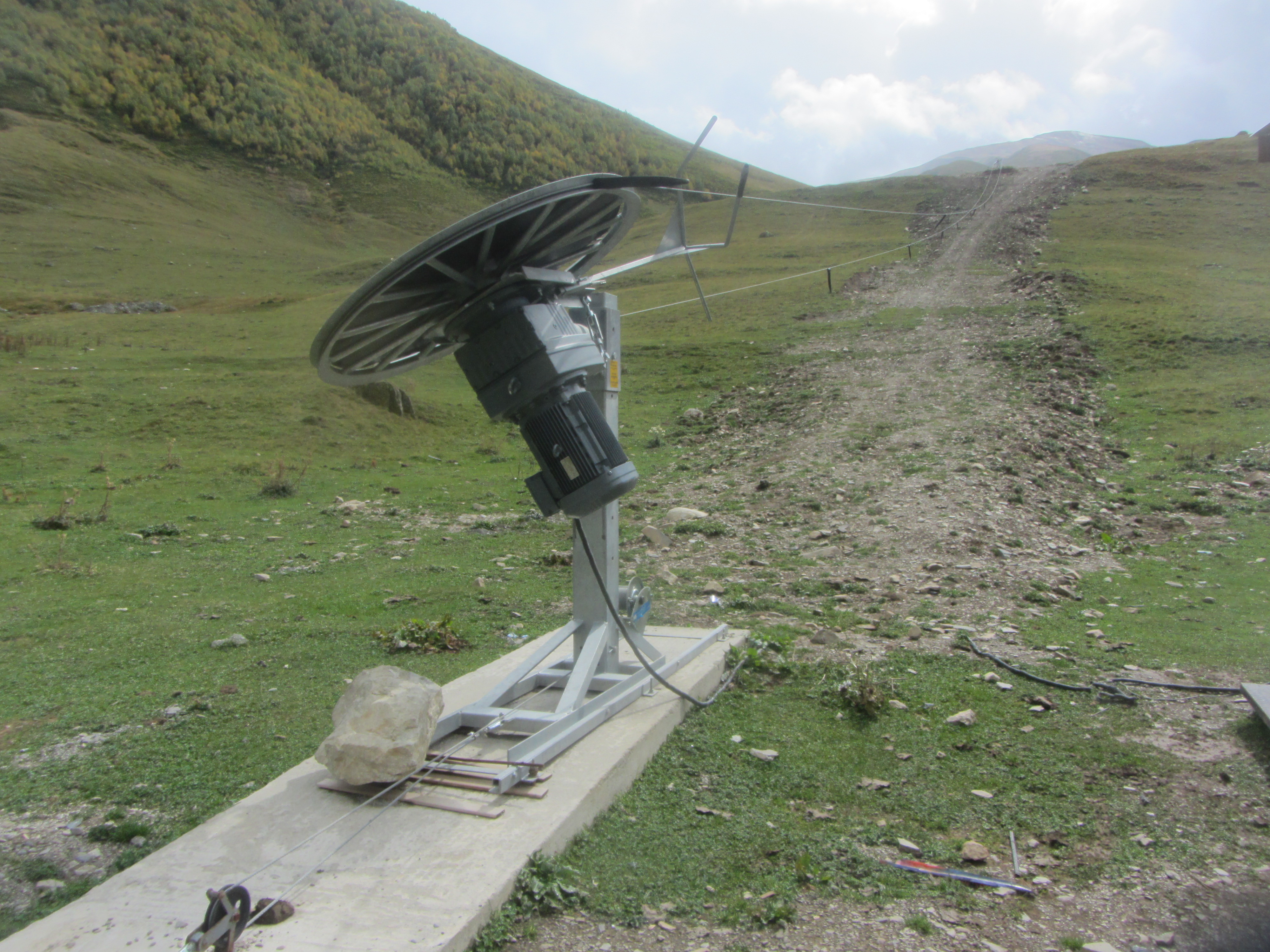
Summer was nearing a close and it was time to collect hay to feed
the cows and horses during the winter.
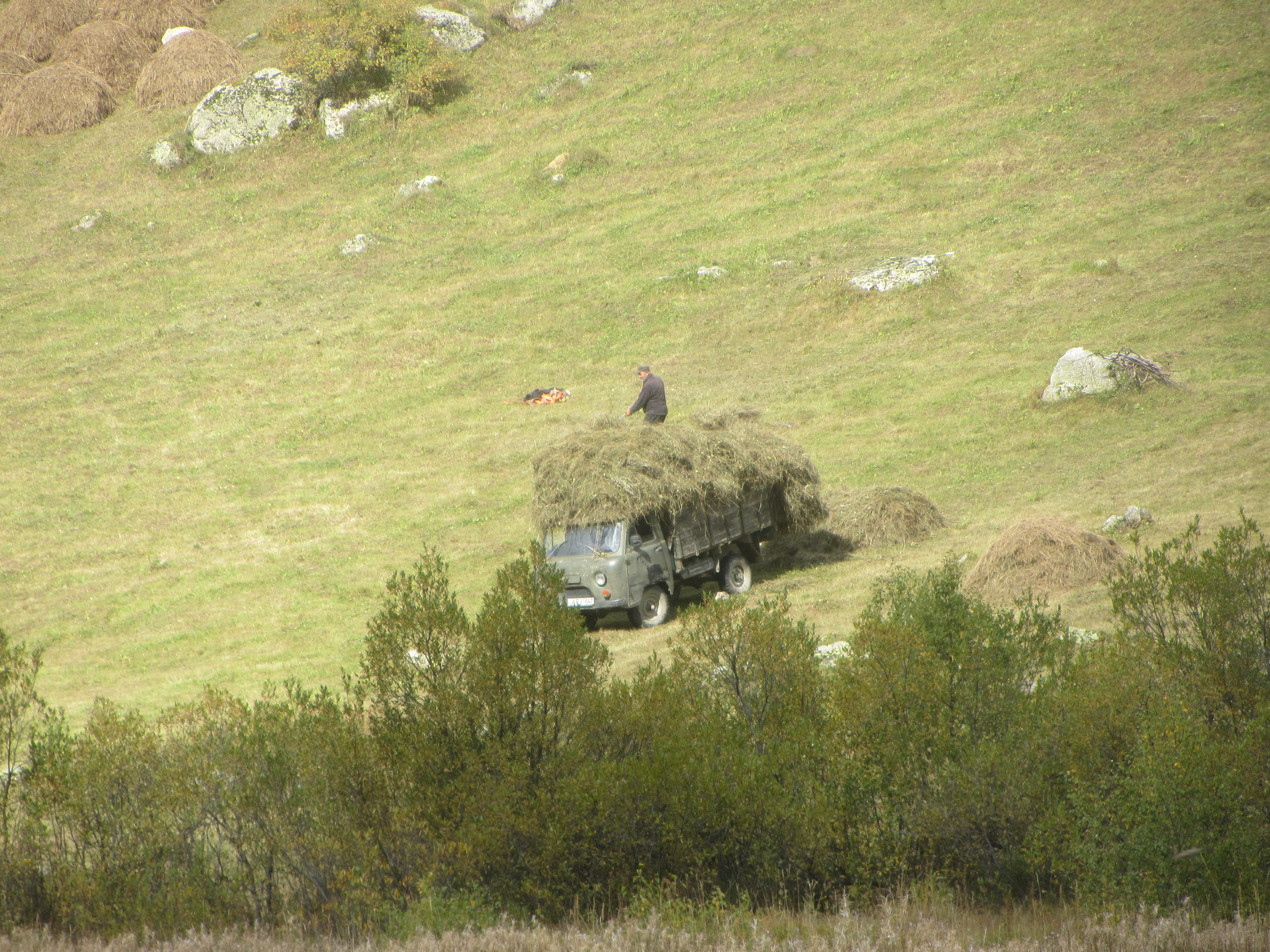
We hiked along a muddy road but the going was easy.
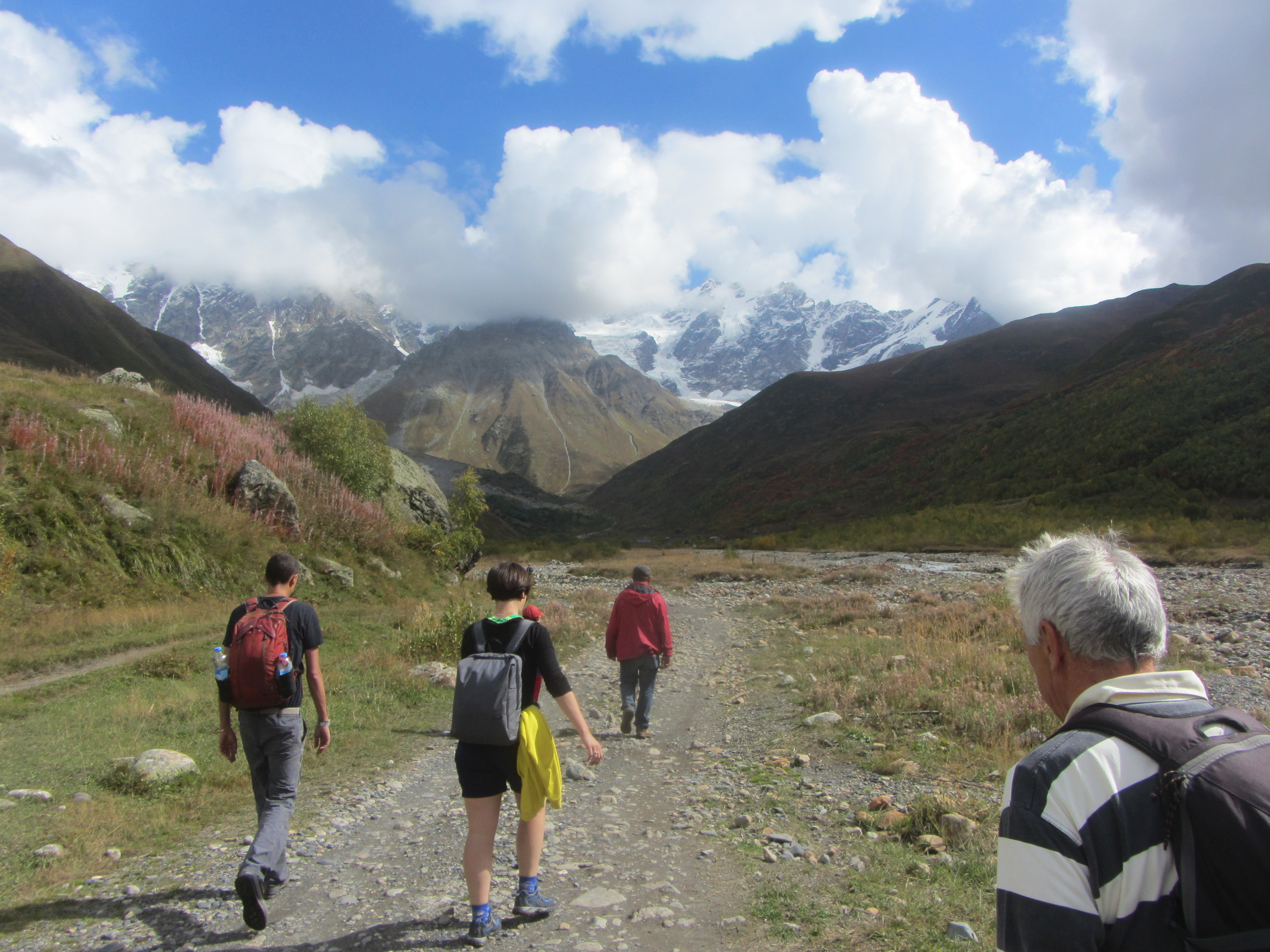
We were getting closer to the glacier that is the source of the
river.
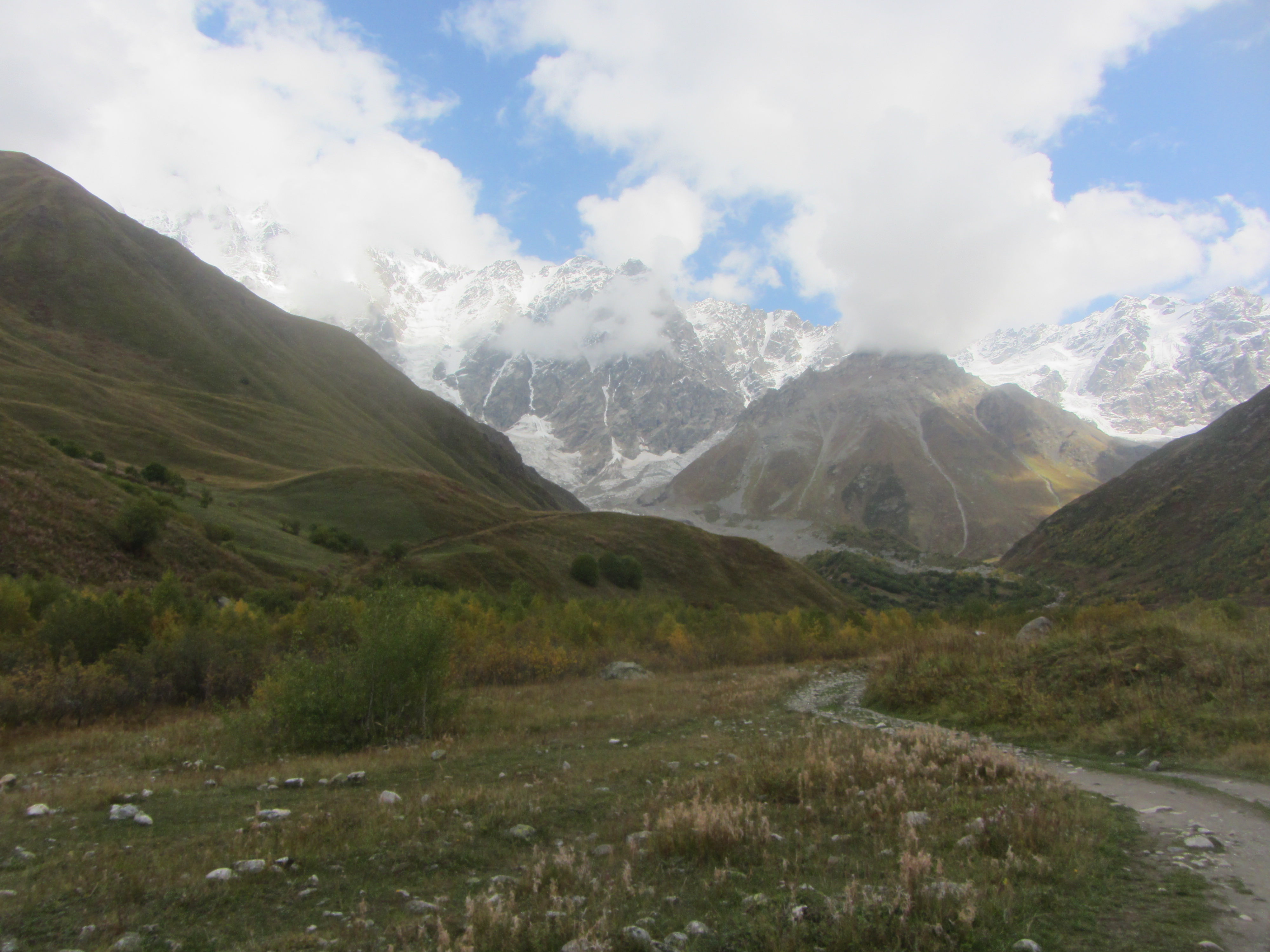

We did not have time to hike all the way to the glacier though I
suggested that a day be added to the next trip to permit a longer
hike today. Instead we stopped at a tiny cafe that had sprung
up at the end of the road. No electricity or running water,
but a comfortable place to sit and treat myself to a Georgian
Lemonade and a piece of cake. The man in the red jacket was
our guide for this hike sitting next to his son. He grew up in
Ushguli, went away to the University and later returned to teach
math at the local school. I was thrilled to hear that he
remembered my visit twenty years earlier and he told me that my
young guide then was now the owner of the biggest cafe in Mestia,
our next stop.
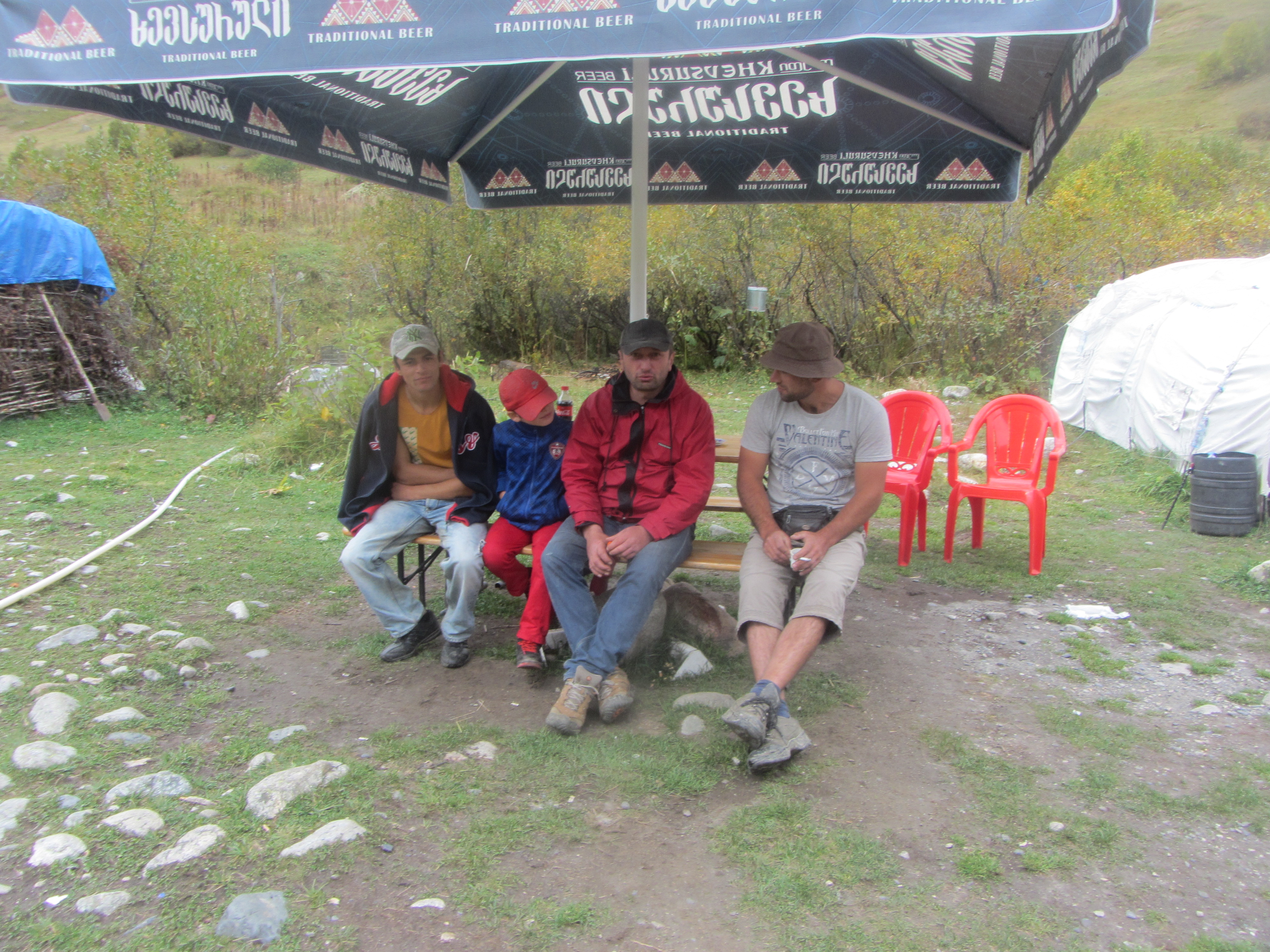
We hiked back to Ushguli, down the main street to our guest house in
time for a late lunch.

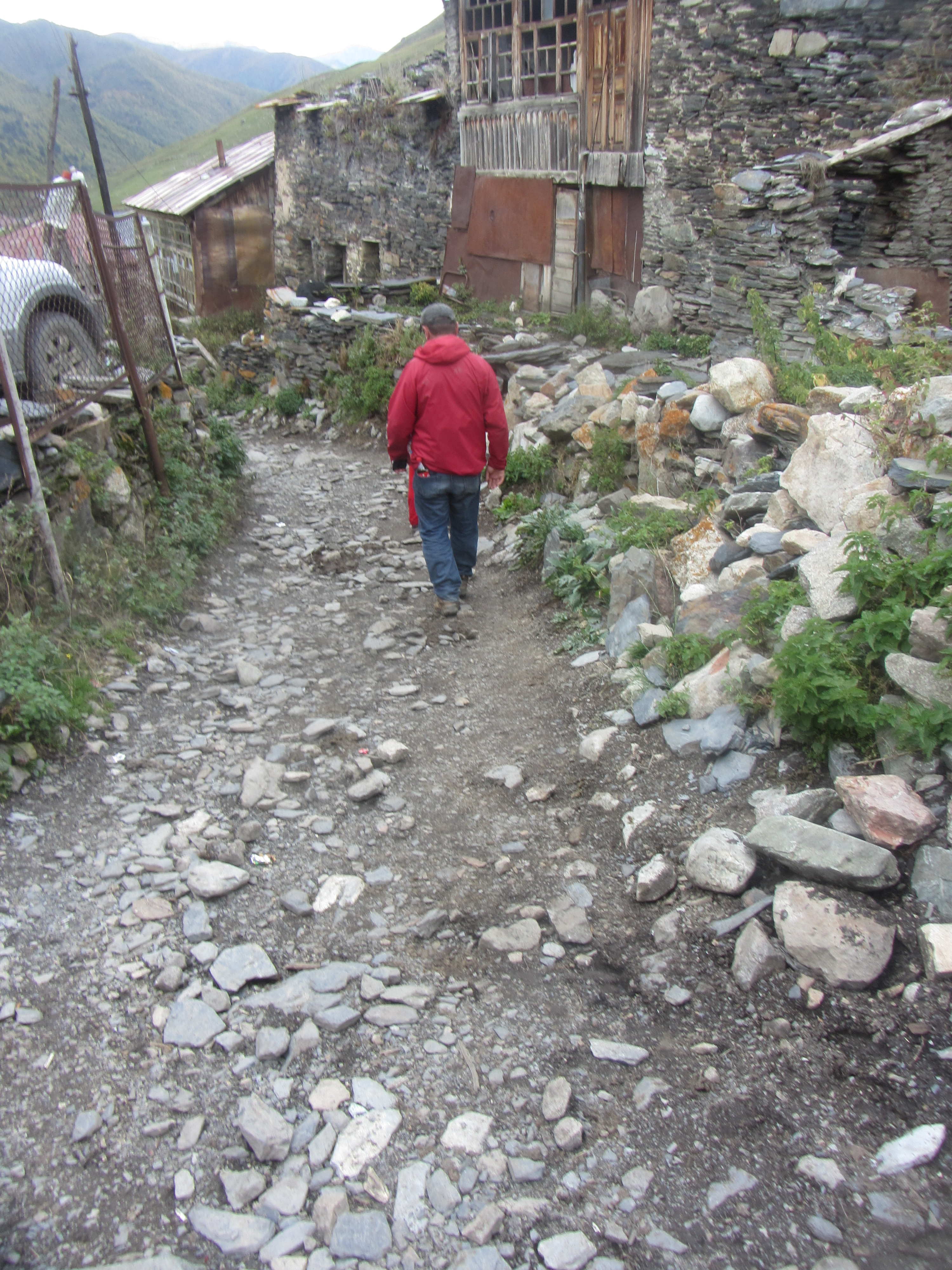
After lunch we got back in the four wheel drive vehicles for the
drive to Mestia, the capital of the region. Click here
Back to Return to Georgia index click here
To overall travels index page click
here
